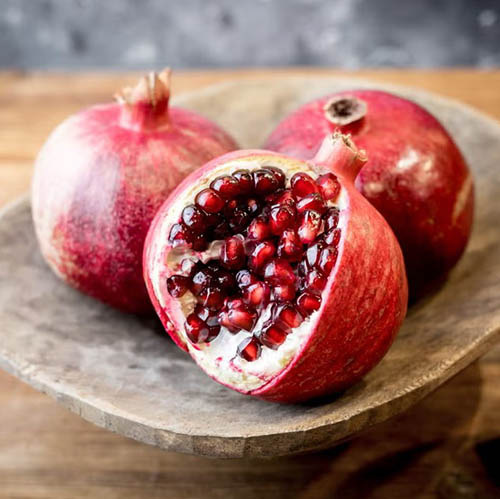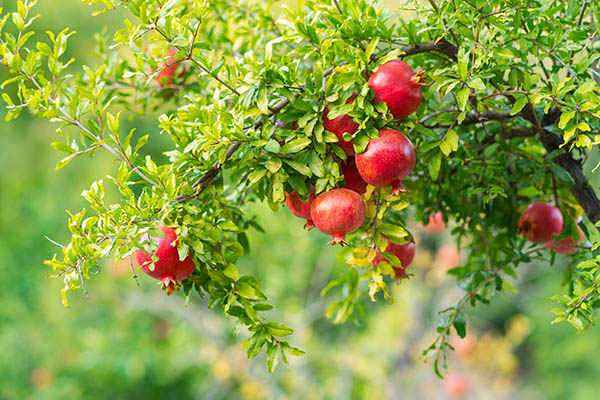Pomegranate Tree (Punica granatum)
Map Position: 23
The pomegranate is a characteristic shrub or small tree of the Mediterranean. It’s bright scarlet bell-shaped flowers are most attractive. Inside the fruit are hundreds of fruity seeds that can be eaten on its own or added to other dishes. They are supposed to help to protect against heart disease, lower blood pressure and blood sugar etc.
It was also a religious symbol in many ancient cultures and in Greek and Roman mythology.
Biblical
Its beautiful flowers were used for decorative purposes. The Lord instructed Moses to use them to embroider on the priests’ robes (Exodus 28.33, 28.34, 39.24, 39.25, 39.26).
When Moses sent out men to spy on the land, he instructed them to bring back some fruit of that land. So, on their return they had grapes, pomegranates and figs (Numbers 13.23).
When the Jews were in the desert they complained bitterly about “this evil place, […] no place for grain, or figs, or vines, or pomegranates” (Numbers 20.5).
The Jews were told to be thankful to the Lord who had guided them into “a land of wheat and barley, of vines and fig trees and pomegranates” (Deuteronomy 8.8).
Trees are often used to describe a place where it is good to stay. So, Saul is said to have dwelt “in the pomegranate cave at Migron” (1. Samuel 14.2)
When Solomon built his house, he had the pillars made with bronze capitals in the shape of pomegranates (1. Kings 7.18, 7.20, 7.42 and 2. Chronicles 3.16 and 4.13). These were so precious that Nebuchadnezzar, the king of Babylon, took them with other valuable items after he had conquered Jerusalem (2. Kings 25.17 and Jeremiah 52.22 and 52.23).

Solomon describes the beauty of his bride: her “cheeks are like halves of a pomegranate” (Song of Solomon 4.3 and 6.7) and her “shoots are an orchard of pomegranates” (Song of Solomon 4.13). It is an indicator of the forthcoming spring when “the pomegranates are in bloom” (Song of Solomon 6.11 and 7.12). Solomon is nourishing his love with “spiced wine to drink, the juice of my pomegranate” (Song of Solomon 8.2).
Aaron, who was a High Priest together with Moses, was given insignia of his dignity as a priest which included cloth that was “encircled with pomegranates” (Sirach 45.9 - RSV).
It is a disaster when important tree wither such as the pomegranate (Joel 1.12, see also 1. Apple and 17. Palm).
When the Jews returned from the exile in Babylon, they were encouraged by the prophet Haggai to rebuild their lives and above all the temple: “Is the seed yet in the barn? Indeed, the vine, the fig tree, the pomegranate, and the olive tree have yielded nothing. But from this day on I will bless you” (Haggai 2.19).
